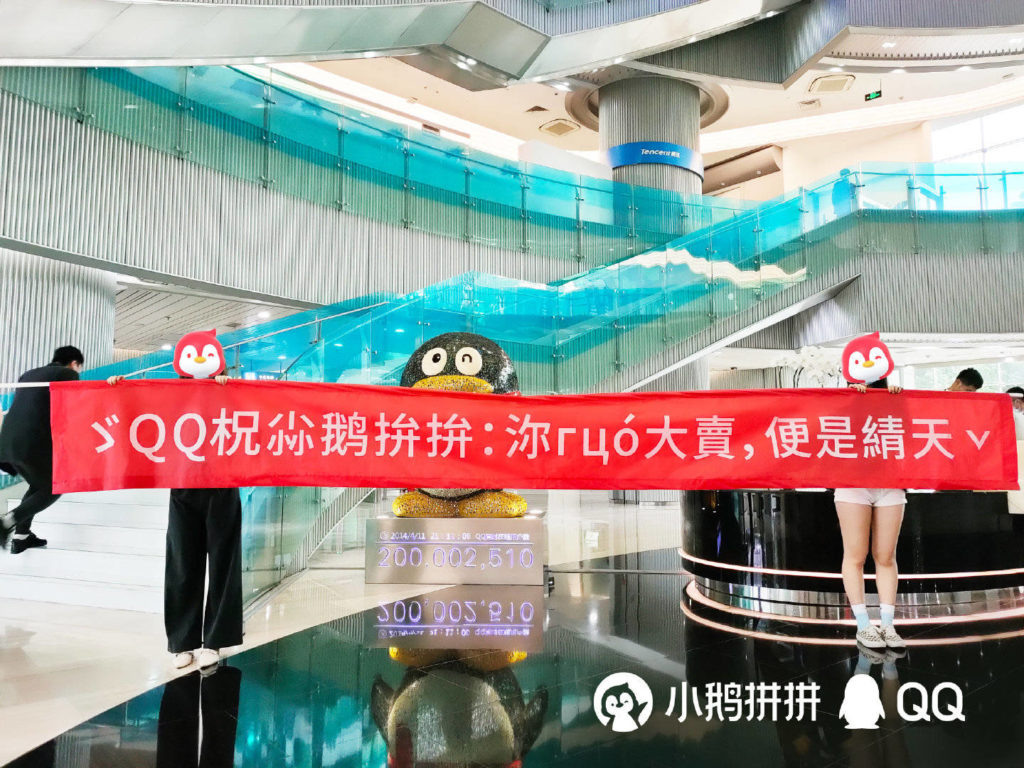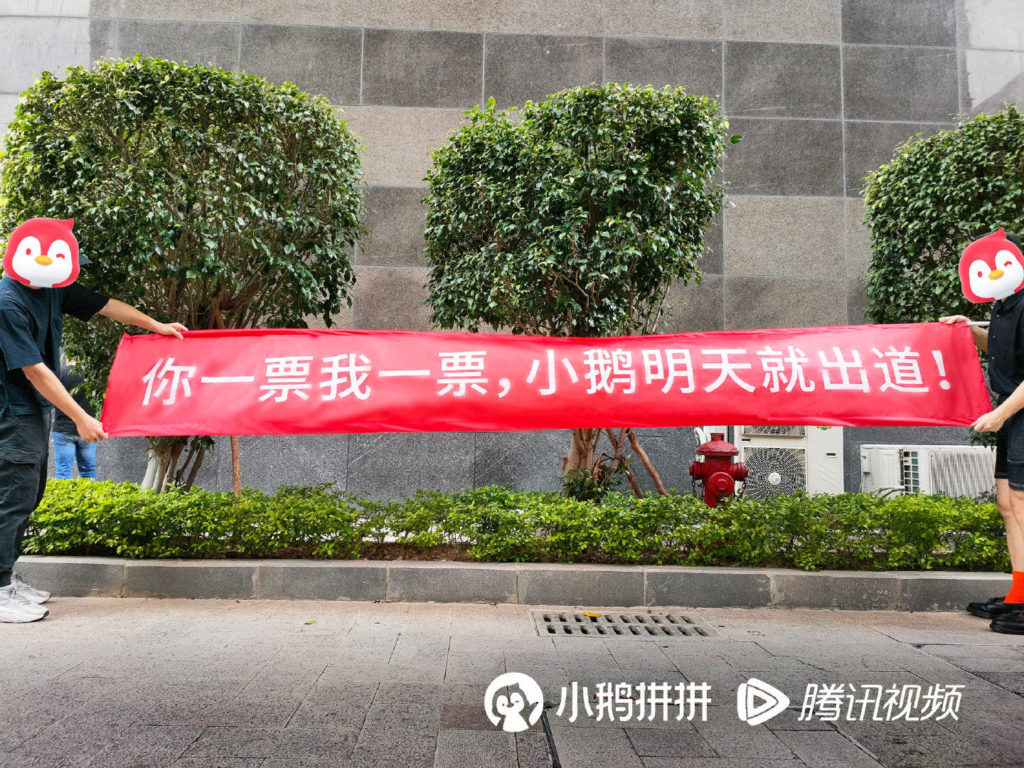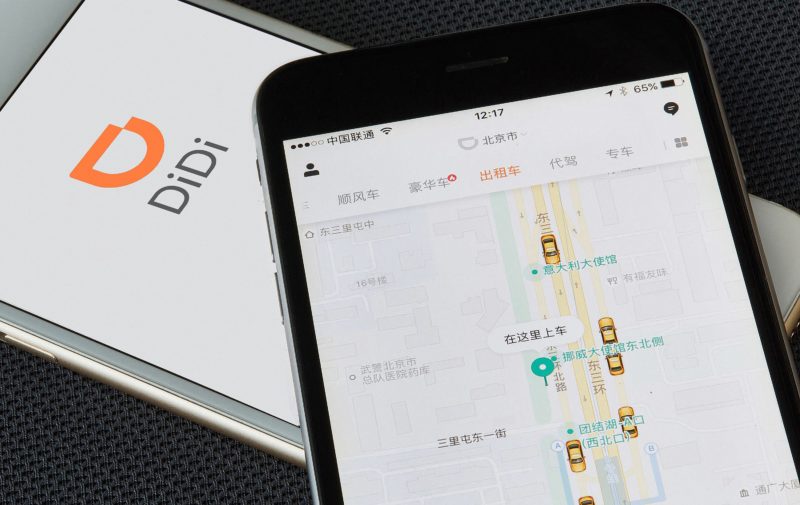Pinduoduo’s social buying model has been a hit among Chinese consumers, enabling it to become the youngest company ever on the Nasdaq Index. Indeed, it is surprising that up until this point none of China’s other tech giants have tried to replicate the success of the platform.
However, Tencent’s new mini program Xiao’e Pinpin 小鹅拼拼 may threaten Pinduoduo’s unique position in the market. Xiao’e Pinpin 小鹅拼拼 is named as such in reference to Xiǎoé 小鹅 meaning little penguin, which is Tencent’s iconic logo, and pīnpīn 拼拼 which is the Chinese term for group buying .
Similar to Pinduoduo, Tencent’s social commerce mini program offers users massive subsidies and discounts through a group buying business model. Users share links with friends and bulk buy products in a group to gain lower prices via the WeChat mini program. As such, the experience is as much social as it is a retail transaction because the key to unlocking lower prices is by sharing the mini program with friends.
Xiao’e Pinpin also focusses on customer service: delivery is free and takes place within 48 hours, and products will be refunded if returned within 7 days.
The social commerce channel was launched in May 2020 but was only officially promoted on November 2, just in time for Singles’ Day promotions.
Xiao’e Pinpin’s launch for Singles’ Day
Singles’ Day, which also happened to be Tencent’s 22nd birthday, was chosen as the day to share Xiao’e Pinpin with the world. Xiao’e Pinpin adopted a red penguin as its logo, an animal which has become deeply associated with Tencent due to its QQ penguin mascot.
Tencent’s subsidiaries, such as QQ, QQ Music, Tencent Video, Honor of Kings and Game for Peace, helped to increase awareness about the new brand by posting promotional banners online. Appearing on these channels enabled Xiao’e Pinpin to amass new users as they all have huge audience bases.
Tencent also appealed to a popular culture form among Chinese audiences – rap music. This music genre has been popularised by the reality show “The Rap of China” and has become increasingly widespread and mainstream in China in recent years. Xiao’e Pinpin’s promotional video featured catchy rap beats in the background which many netizens downloaded onto their phone, helping to spread the word.
Engaging games on mini programs were one of the most popular promotional activities during this year’s Singles’ Day and Xiao’e Pinpin didn’t miss the opportunity. It lanched a “Xiaoe Scavenger Hunt” on its mini program in which users were encouraged to invite their WeChat friends to look for “treasure” in the form of discounts, vouchers or small prizes. The creative game helped to bring in new users via engagement within WeChat’s social circles.
Xiao’e Pinpin also conducted offline promotions in large Chinese cities, including Beijing, Shenzhen and Changsha.
In another promotion with Tencent’s famous penguin mascot, Xiao’e Pinpin launched a large advertising float on Changsha’s Tangerine Island 橘子洲. Many people took pictures with the float and shared them to social media, thereby raising further awareness about its launch. The campaign also contained a clever play on words as giant penguin (巨鹅 Jù é) sounds the same as the first two characters of massive discount (巨额折扣 Jù’é zhékòu) in Chinese, alluding to the main draw of Xiao’e Pinpin. Tencent also erected a billboard on Shenzhen’s Hanking Center Tower, the 29th tallest building in China, with the words:
“Hope Xiao’e Pinpin has a record-breaking Singles’ Day”.
Xiao’e Pinpin advertised in Beijing’s metro which is home to large volumes of commuter traffic. The eye-catching adverts were plastered on the walls of metro carriages with a range of maths problems to attract the attention of passengers.
Pinduoduo v Xiao’e Pinpin: direct competitors?
While the two platforms share the same model, what are the key differences between Pinduoduo and Xiao’e Pinpin? And how much of a threat is the new channel to Pinduoduo?
Pinduoduo is a comprehensive e-commerce platform (which even has a university!) and is available through social platforms like WeChat, while Xiao’e Pinpin currently only exists as a WeChat mini program. Although Pinduoduo already has an extensive number of users, merchants and brands on the platform, Xiao’e Pinpin’s backing of Tencent and presence on WeChat means that it has access to WeChat’s 1.2 billion strong audience.
Tencent was previously one of Pinduoduo’s key investors and held a 18.5% stake in the platform until October 2019, which suggests that Tencent is moving to make Xiao’e Pinpin a direct competitor to it. However, for the meantime, WeChat still gives users multiple ways to shop on Pinduoduo. While Xiao’e Pinpin may directly compete with Pinduoduo in the future, especially if it targets consumers from lower-tier cities, for now Tencent’s new group buying scheme needs more time to grow its name and audience.
Widespread and timely campaign launch
The timely launch of Xiao’e Pinpin for Singles’ Day enabled Tencent to develop a comprehensive campaign combining online and offline promotions. This developed awareness about the brand to a range of audiences and was further helped by Tencent rallying all of its subsidaries to take part in promoting the new site.
The integration of Xiao’e Pinpin into Tencent’s penguin branding helped consumers easily and quickly associate the brand with Tencent and increase brand recognition. Indeed, Xiao’e Pinpin is able to appeal to WeChat’s gigantic user base to expand and become a competitor to rival group-buying platform Pinduoduo.
Read more in our case study about Pinduoduo.



















